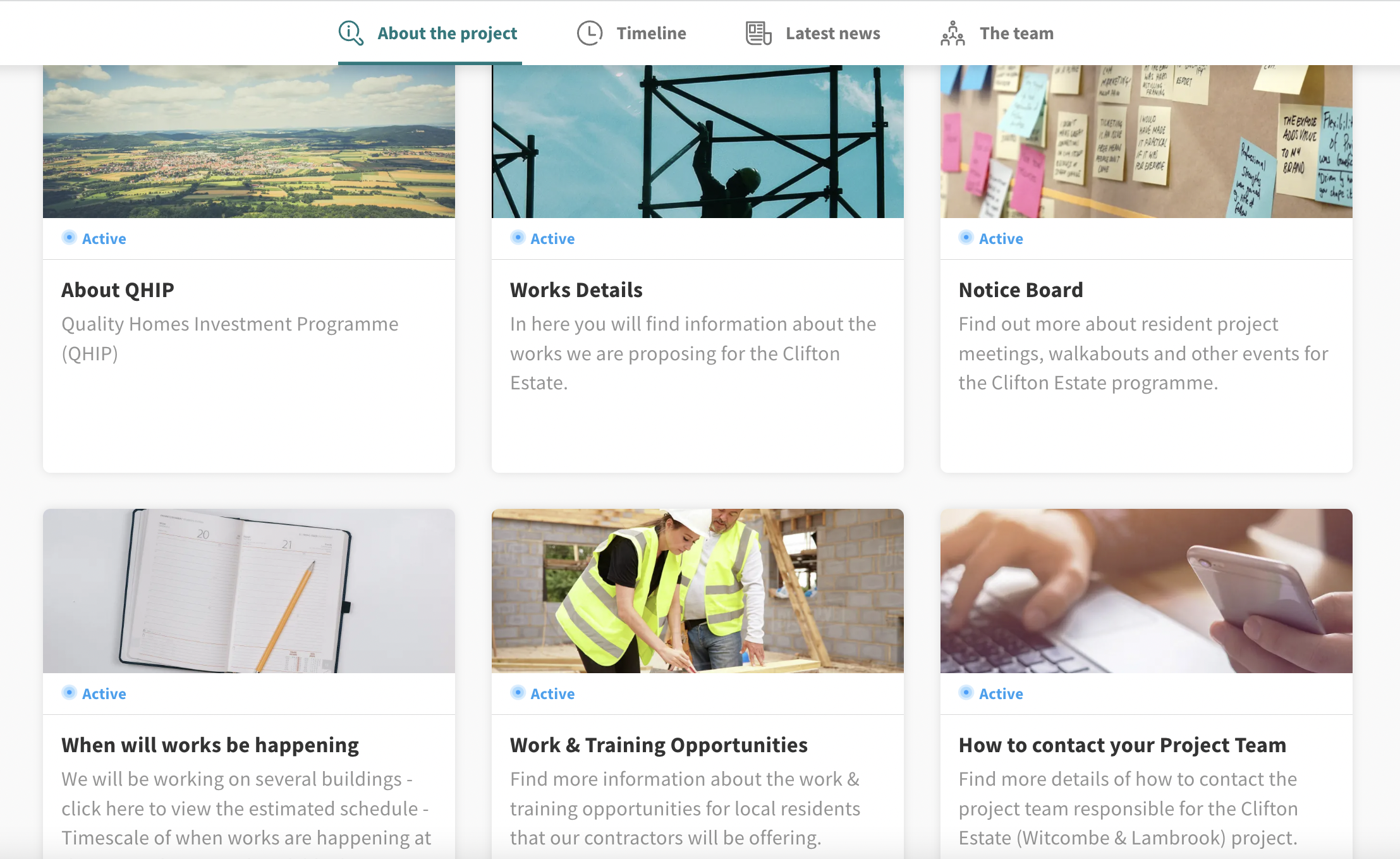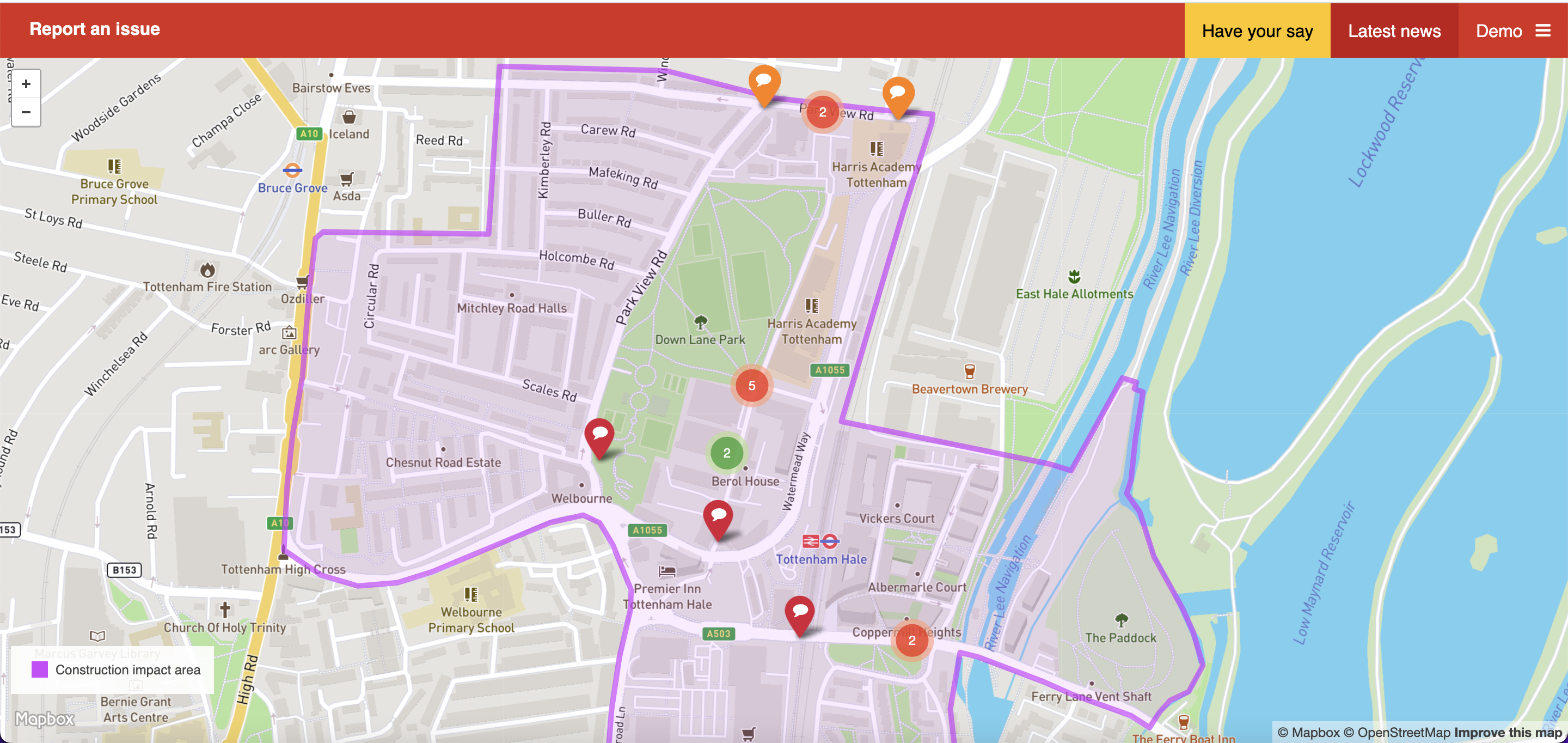Commonplace developer series: #2 construction phase

By Charlotte Cooper | 16/04/24 12:45
4 min read
The second instalment of our five-part developer series is here! Part 1 discussed the planning stage of the project, but engagement does not stop there. During construction, you want to maintain communication with local people who might be impacted by the works - and satisfy the curiosity of potential buyers and renters.
Our series is a catalogue designed to showcase just how important community engagement is from the inception of a project to post-occupancy today we’re focussing on the construction phase.
Construction is often the time that community engagement can fall down on the list of priorities for a developer. Once data has been gathered and a project given the green light during the pre-planning and planning phases, community involvement can start to wane. This can cause trouble and delays down the line.
How to stop this? This guide will explain the importance of continuous communication between the award of planning permission and throughout the construction phase. As usual, we have some examples to inspire you. Ready? Let’s get started
Read part one on pre-planning and planning.
Construction phase plan: why community engagement is important
If there’s one thing you’ve probably heard on this blog, it’s how crucial continuous engagement is for building trust and maintaining a good relationship with the public- no matter the project. If you stop taking steps to actively speak to the community once the construction phase begins, you risk local people feeling alienated from the development or that their opinions were simply a box-tick exercise for the planning phase.
Construction is also one of the loudest and most obvious parts of development, so people who live and work nearby could have issues and questions about the project. For example, do they have a clear timeline? Do they know to whom they should address concerns about noise or disruption? Are people new to the area aware of what this development hopes to achieve and the benefits it will bring? Without an easy way to talk to developers directly, these complaints could go straight to the council and sour the project before it’s finished. Not great for your reputation.
Taking active steps to answer the community’s questions and ensure that they have a clear picture of how construction is progressing helps to stop issues before they escalate, It also builds a sense of trust between developer and resident: something that’s an important part of any successful project.
We’ve gathered a couple of examples to highlight how this can be done, while also showing which aspects of your project are the most useful to share with the local community.
Construction Phase Example: Clifton Quality Homes Investment Programme
 Southwark Council has been performing major works to their Clifton Estate with A & E Elkins Ltd and used a Commonplace as an information page for all updates during the construction phase. Along with a thorough description of why these works are taking place, separate pages have been set up to make sure anyone who lands on the website can find out any key details about the works including:
Southwark Council has been performing major works to their Clifton Estate with A & E Elkins Ltd and used a Commonplace as an information page for all updates during the construction phase. Along with a thorough description of why these works are taking place, separate pages have been set up to make sure anyone who lands on the website can find out any key details about the works including:
- The areas where works will be completed: A crucial detail so residents can know when and where construction will be happening so they can prepare themselves and avoid loud surprises.
- Previous correspondence sent out to residents about events relating to the project: This gives a greater level of transparency to the project as there’s a clear public record of all conversations had.
- Work and training opportunities: The council also chose to highlight work and training opportunities with A&E Elkins Limited as part of the social value commitments to their contractors.
- How to contact the project team: Having a direct line of contact with both the planner and the construction team is vital. Not only for being able to relay information quickly and being able to talk to the surrounding community directly, but avoiding complaints being escalated above you.
This is an example of what can be done with a simple yet effective hub where all information is clearly available to see. With the website promoted as work continues, it can continue to act as an informational base for anyone with queries about the project.
Check out the construction phase website
Construction phase example: Construction in Tottenham Hale

Construction is underway for a number of sites in Tottenham Hale. In order for Haringey Council to make this process as smooth as possible for everyone involved, an interactive Heatmap was created specifically for them so residents could flag any construction issues. By placing a pin on any location, specific problems can be flagged and solved: such as dirty roads, out-of-hours construction work or lorries waiting in places they shouldn’t be. On their informational page, they make it clear that all comments will be shared regularly with the construction team. There’s even an option for comments to be directly replied to thanks to the comment reply feature. This helps build confidence that flagged issues are being addressed and that the community does have a say in how the construction phase progresses.
The area of construction has been clearly highlighted on the Heatmap and the questions when dropping a pin were specifically designed to get the most useful information. This was done by using both open and closed questions so residents could leave specific details about the issues they discovered while also making the data easy to categorise.
Check out the construction phase website
If you’re considering creating an engagement website for your development, here’s a handy checklist of aspects to consider to make the most of this stage of engagement:
- Is the timeline of the construction phase plan clear?
- Do visitors have an easy way to contact you?
- Are all previous correspondences and planning documents available?
- Are you showing that people’s questions and issues are being addressed?
- Are you actively promoting the engagement so the community knows you want their input? (This could be through email, social media, in-person events or flyering)
- If this is a residential property, are you trying to capture the interest of potential renters and buyers and then signposting to where they can find more information?
Our Customer Success Team will build a website to meet your requirements. They can also work with your marketing team to integrate the branding and ensure that interested individuals have a smooth transition to a marketing website.
Make sure to stay tuned for #3 in our developer series: Co-Design! And if you can’t wait that long, our dedicated team is still here to show you how Commonplace can work for your next project! Just click below and book your free demo now…
.png)
